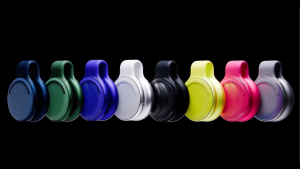Exploring the Capabilities of VideoJam: A New Era in AI Video Creation

Imagine a world where AI creates stunning videos with just a few prompts! The new AI, VideoJam, is making this a reality. Can it outperform the famous Sora by OpenAI? That’s the big question. We’ll dive deep into comparing these two titans and see who comes out on top.
VideoJam is catching eyes in the tech world. With its ability to render lifelike videos effortlessly, it poses a challenge to existing AI models. But does it truly stand above the rest? Let’s break down its features, strengths, and potential limitations.
The Battle Between AI Giants
AI technology is advancing at a rapid pace, and VideoJam is the latest contender against OpenAI’s renowned Sora. Sora made waves with its extraordinary memory and detail retention, but it wasn’t perfect. Consistency issues plagued it, sometimes not understanding prompts correctly.
VideoJam, on the other hand, promises to address these issues gracefully. In a side-by-side comparison, VideoJam seems to offer smoother transitions and better motion understanding. For instance, when rendered footage from Sora turned out to be a horror movie scene, VideoJam provided better clarity.
When the challenge was creating a juggling performance, VideoJam outshone its older sibling. The results were so impressive that even skeptics had to pause and inspect the frames closely to identify that it wasn’t real footage. Such precision marks a new era in AI capabilities.
Breaking Down the Details
One of the standout features of VideoJam is its enhanced understanding of physics and motion. How does it achieve such intricate modeling? When pouring water, it captures every detail, from the flow to the bubbles formed—something previously reserved for expert simulators.
VideoJam learned from an immense dataset including countless real-life videos. This exposure allowed it to understand complex actions that once required human expertise. Yet, it isn’t without its quirks. Observers noticed a minor flaw—a pop in frames that suggests room for improvement.
VideoJam’s strength isn’t just in rendering lifelike visuals. It’s also in its creative prowess. Whereas other systems struggled to comprehend conceptual prompts, VideoJam tackled them with ease. Think about putting roller skates on unusual creatures, like raccoons. This AI doesn’t just imagine—it understands the practicalities!
Pushing Creative Boundaries
VideoJam goes beyond images, delving into realms of creativity. Unlike static creations, it envisions dynamic stories. When challenged with roller skates on a raccoon, its logical approach stunned everyone, making it not only feasible but also functional.
This progress is immense when contrasted with its predecessors like DiT, which VideoJam builds upon. In scientific evaluations, such innovative techniques often show varied results. Yet VideoJam consistently outperforms its antecedents, signaling a game-changing leap forward.
So, what makes VideoJam’s magic tick? It’s called Inner Guidance. The system predicts motion, guiding itself to create smooth, natural progression in videos. This novel approach is one of its core innovations, setting it apart from others in the field.
VideoJam’s Inner Mechanics
At its core, VideoJam is deceptively simple yet effective. Initially, it gets video frames and anticipates subsequent moments. During creation, it utilizes motion predictions to streamline movements.
Inner Guidance, as termed by its creators, allows AI to perform tasks more efficiently. By forecasting how elements interact, the AI ensures a cohesive output. This methodology could enhance any video model, not just VideoJam.
Comparisons with DeepMind’s Veo2 demonstrates VideoJam’s potential not just as a standalone tool, but as a framework that could amplify other systems’ functionalities. This synergy in AI models marks a promising shift in the development landscape.
Facing Challenges and Limitations
As promising as VideoJam is, it’s not without drawbacks. The current output isn’t in high resolution, a notable shortcoming for some users. Nevertheless, the underlying technology is groundbreaking.
Despite not being widely accessible for personal use, the potential for integration into other platforms remains vast. With the framework available, future iterations might soon be available in other popular systems.
This accessibility could democratize filmmaking, transforming anyone with a creative spark and a prompt into a capable director. The blend of creativity and technical prowess signifies future possibilities for AI enthusiasts and novices alike.
The Future of Creative AI
As AI models evolve, the creativity and adaptability they bring redefine boundaries. VideoJam isn’t just a tool—it’s a catalyst for change. Imagine a world where creative barriers fade and new orders take hold.
With the right technological advancements, even smaller creators can produce high-quality content. No longer constrained by equipment or budget, artistic vision could reach new heights.
AI’s ability to assist in creative endeavors means ideas once limited by logistics now have a tangible form. VideoJam is a glimpse into what’s possible when technology and imagination intertwine.
The Exciting Road Ahead
VideoJam has laid a foundation upon which the next generation of technology might build. It exemplifies the potential of AI as a creative partner, not merely a tool.
As it stands, though not readily accessible, its implications for video production are vast and varied. Its ease of use could invite more creators into the fold.
The enthusiasm surrounding VideoJam heralds an era where technology and creativity seamlessly integrate, offering endless opportunities to those willing to embrace the new digital frontier.
VideoJam’s advancements hint at an AI-driven future brimming with possibilities. With further refinements, this technology could reshape creative industries, ushering in an era where imagination knows no bounds.
Source: Youtube





